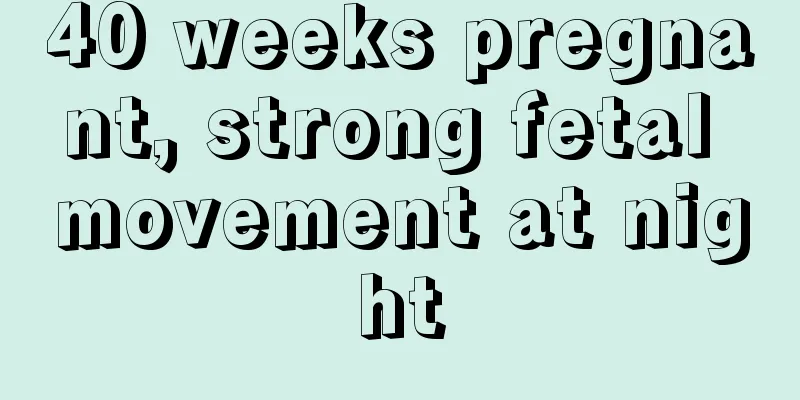"Dizziness" things: Exploring the mysterious world where otolaryngology and neurology intersect

|
Author: Li Chunyang, Chief Physician, Inner Mongolia Autonomous Region Brain Hospital (Third Hospital) Reviewer: Wang Xiaolei, Chief Physician, Affiliated Hospital of Inner Mongolia Medical University 1. The tortuous path to diagnosing vertigo Uncle Li had a stroke two years ago and couldn't speak clearly. He also caught a severe cold during the Spring Festival. He couldn't tell whether it was influenza A or norovirus, but he was exhausted. Uncle Li was in better spirits that day and walked in the park, thinking that it was almost March 3rd and he didn't know how many times he could enjoy the beautiful flowers. Just as he was feeling sad about the passing of spring and autumn, he felt dizzy and the scenery was blurred and distorted like a jigsaw puzzle. The world seemed to be turned upside down. Uncle Li reached out to hold on to something, but he fell to the ground. Figure 1 Original copyright image, no permission to reprint An hour later, in the emergency room, Grandpa Li was lying on a cart with his eyes closed, his face defeated, and cold sweat dripping down his face. He tried hard to force a polite smile at the doctor, but after opening his eyes, he couldn't help but tilt his head and vomit several times into the plastic bag held by his wife. The doctor learned that he had had a cerebral infarction before, and immediately checked an MRI. After that, he looked carefully at the computer: "No cerebral infarction." The family was relieved, but questions came to their minds: Why did he look like this? The doctor said that he might have vestibular neuritis, and said that it had no direct relationship with cerebral infarction. Grandpa Li couldn't help but be stunned for a moment: "What is vestibular neuritis? It's really tormenting me." 2. The inextricable relationship between vertigo and ears Tens of millions of people in China suffer from ear diseases to varying degrees. It is common for the elderly to be hard of hearing and for family members to shout when they talk. But what is less known is that in addition to hearing, the inner ear's utricle, saccule, and semicircular canals are also responsible for mastering the body's perception of position changes and helping to maintain balance. This is inextricably linked to the occurrence of "vertigo". Interestingly, hearing loss is also closely related to cognitive impairment. In other words, elderly people with hearing loss are more likely to be slow to react and develop dementia. What's more, repeated dizziness is also accompanied by anxiety and depression, while rehabilitation training will have some effect. In other words, a small inner ear is associated with otolaryngology, neurology, psychiatry, and rehabilitation. To understand why vertigo is often related to ear diseases, we have to start with the inner ear. The inner ear has some structures, such as the utricle, saccule, semicircular canals and vestibular nerves, which together form a sophisticated balance perception system. The utricle and saccule are like two "little housekeepers". When the head moves in a straight line, the sensory cells of the utricle and saccule will convert the changes in position into electrical signals and transmit them to the brain through the vestibular nerve. The semicircular canals are like three mutually perpendicular "small pipes", which are responsible for sensing accelerated movement in different directions. When you turn your head, the lymph fluid in the semicircular canals will flow, which also stimulates the sensory cells and sends signals to the brain. The vestibular nerve is like an "information highway", which quickly and accurately transmits the position and movement information collected by the inner ear to the brain. Figure 2 Original copyright image, no permission to reprint Once there are problems with these structures in the inner ear, such as otolith detachment, abnormal lymph flow, or damage to the vestibular nerve, the information transmitted to the brain will become very confusing. After the brain receives incorrect information about space and position, it will feel like the world is shaking, the world is spinning, and symptoms such as "vertigo", nausea, and vomiting are the manifestations of the body after receiving incorrect spatial information. Therefore, in many cases, although it is "vertigo", the root cause is in the ears. 3. The Secret of Vestibular Neuronitis Back to the vestibular neuritis that Mr. Li suffered from, it is currently believed to be related to viral infection or autoimmune response. After the virus invades the human body, it may directly invade the vestibular nerve; or trigger the body's immune system to rise up in resistance. During the resistance, the immune system misjudges and attacks the vestibular nerve as an "enemy". After the vestibular nerve is "injured", it transmits chaotic balance and spatial position information to the brain, so symptoms such as dizziness, nausea, and vomiting follow. After Mr. Li was diagnosed, he began active treatment, and drug treatment is an important part. Usually, glucocorticoids are used, which are like a "brave general" that can quickly "suppress" inflammation and reduce swelling and damage to nerves. Doctors sometimes also use some drugs to improve inner ear circulation. In addition to medication, the role of vestibular function rehabilitation training cannot be underestimated. It helps patients restore their balance function, improve their quality of life, and return to normal life. Through targeted training, it helps patients re-establish the correct information transmission between the brain and the inner ear, enhances the vestibular system's ability to adapt to various movements and position changes, thereby alleviating vertigo symptoms and improving body stability. There are many different methods of rehabilitation training. The first is basic head movement training. Patients need to slowly turn their heads left and right, nod up and down, and make circular movements of their heads. These simple movements can effectively stimulate the vestibular receptors in the inner ear, help them gradually adapt to changes in head position, and enhance the sensitivity and reaction speed of the vestibular nerves. Balance training is also an important part. One-legged standing training is one of the common methods. Patients can first transition from standing with both feet with eyes open to standing on one leg. Standing with eyes closed is also challenging, requiring patients to maintain body balance with their eyes closed. The standing time each time can be gradually extended according to their own situation. In addition, you can also try walking on planes of different textures, such as sand and grass, to further exercise your balance ability by changing the stability of the support surface. These exercises can not only exercise vestibular function, but also enhance the body's flexibility and muscle strength, and improve overall body coordination. When conducting vestibular function rehabilitation training, there are many precautions that patients and their families need to keep in mind. Safety is the primary principle. During the training, you must be accompanied by family members or professionals to avoid falls and injuries caused by vertigo. The intensity of the training should be gradual. According to your own physical condition and adaptability, gradually increase the difficulty and time of the training. If you experience symptoms such as worsening vertigo, nausea, vomiting, etc. during the training, you should stop the training immediately and inform your doctor in time. 4. March 3 and March 3 When Mr. Li fell ill, he was thinking about the third day of the third lunar month. Interestingly, the day he fell ill was March 3 of the Gregorian calendar, 28 days earlier than the third day of the third lunar month, which was the National Ear Care Day. It is easy to understand, the number "3" is shaped like an ear, and the two "3"s are two ears. I hope that every Chinese can have good hearing, not get dizzy, and welcome the spring season with a good mood on the third day of the third lunar month. "On this day, the sky is clear and the air is fresh, and the wind is gentle. Looking up at the vastness of the universe and looking down at the abundance of species, you can enjoy the sight and hearing, which is enough to satisfy your visual and auditory entertainment. It is indeed a joy." |
Recommend
What are the menstrual symptoms of menopause in women?
After women enter menopause, their bodies will sh...
What is fallopian tube adhesion?
Some women have problems with their fallopian tub...
How to treat low estrogen
If the estrogen level is low, we can solve it thr...
Why is there a blood pressure limit when taking aspirin? Because high blood pressure is dangerous
Aspirin is a familiar drug that can inhibit plate...
Why does a woman pee while standing?
Do you have any quirks when taking a bath? Everyo...
There are 6 reasons for anal swelling! How to prevent it? These good habits should be adhered to
Anal distension is a common symptom in anorectal ...
Can I take Yinqiao tablets during breastfeeding?
In life, there are many kinds of medicines for tr...
Is it a boy or a girl if morning sickness is severe?
If the baby has severe morning sickness, is it a ...
Does eating spicy food during pregnancy have any effect on the baby?
I believe that many young people have a great lov...
What are the requirements for medical abortion?
People still need to undergo a series of physical...
Can pregnant women eat okra?
Okra is a very common fruit in daily life. It is ...
How effective is Pelvic Inflammatory Disease Relief Capsule in treating pelvic inflammatory disease?
In real life, pelvic inflammatory disease is a co...
Can I eat longli fish during menstruation?
Women during menstruation need to supplement prot...
How long does it take to get menstruation after taking Clemen?
Clemenorrhoea is a drug that promotes sex hormone...
Counterpoint: Global smartphone shipments are expected to fall 6% in 2023
According to Counterpoint's latest global sma...









